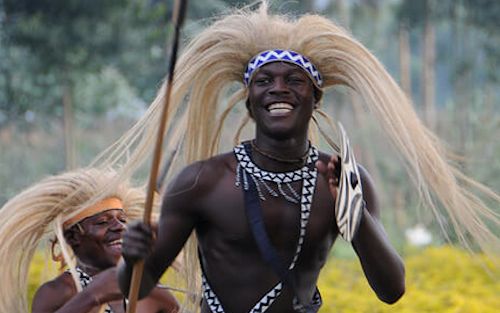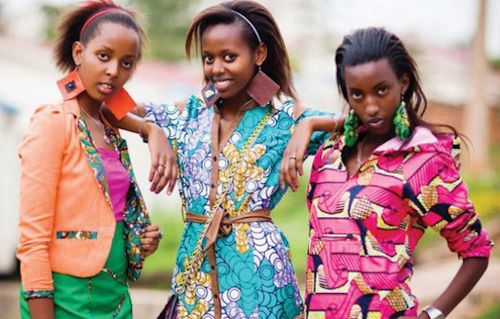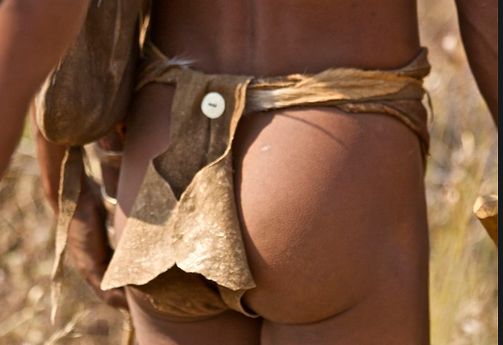Rwanda Safari
The Evolution of Rwanda’s Clothing, Safari Rwanda
Rwanda-Culture, Over the several past centuries, skins of goats, calves and cows were being worn as clothing. After skinning the animals, this kin was beaten using sticks, the animal far removed and then spread out for 2 days in the sun. Afterwards, they would soak it in water so as t soften it before stretching it out on poles. There it was scraped to remove all the flesh using a scraper locally referred to as imbazo in the local kinyaranda language. The skin was then rubbed with grease so as to smooth it before being cut into pieces, assemble and stitched into the required size and design.
In the past, the married women would wear a loin-cloth known as ikanda and this was adorned by a plaited belt made using cowhide.
For the young boys and girls, they usually wore goat skin. The ishabure which was a brief goat skin decorated with beautiful color and some nice designs. The girls would wear these around their hips or fix them over their shoulders to cover their breast area.
The rich people at that time would display their wealth through taking part in trans-atlantic trade. The kings for instance would wear crowns adorned with beads on special occasions for instance during the ceremony of installing a new king. Later back cloth was introduced.
However, after it was proclaimed as a republic of Rwanda, all that was left of nobility such as the royal dressing was entire wiped out. The bits and pieces of the cultural king such as his royal drums which in the past were sprinkled with blood of bulls and venerated traditionally all lost their respect among the Rwandans.
The introduction of the western world political system as well as the western ways of dressing with time replaces all the ancient cultural ceremonial practices as well as the old system of leadership. Today when you visit any of the government offices or attend any official ceremonies, you will find the people of Rwanda dressed in the fashions of the western world.
Rwanda Dancing Traditional Wear
Just as it is in most societies dancing is among the most important cultural as well as social activities down in Rwanda. The country has a number of Cultural dances and among these is the intore dance which is an old warrior dance that was performed to celebrate victory after wars. The dancers would dance in the palace for the king, however today you can enjoy some of these ancient traditional dances at the national Museum situated in Butare.
important cultural as well as social activities down in Rwanda. The country has a number of Cultural dances and among these is the intore dance which is an old warrior dance that was performed to celebrate victory after wars. The dancers would dance in the palace for the king, however today you can enjoy some of these ancient traditional dances at the national Museum situated in Butare.
The dancing traditional wear that Rwandan men wear comprises of skirts (either long or short), head-bands made with different colored beads, ankle belts also with beads in different beautiful colors, head-dresses adorned with long grass wigs, a stick that represents a spear and then a small beautifully painted shield. The ladies also adorn their heads with beautiful beads which they tie on their heads. Other troupes ties bells on their ankles and a belt of beads across their chests.
Influence of the West on Rwanda’s Dressing Culture
 As colonialism brought in several people from the western world including Belgians, Germans plus several others who accessed this country especially after the 1994 genocide, the style of dressing of the local Rwandan people changed. Cloth was introduced and with time many people especially in the large cities such as Kigali today have adopted the western style of wear for their day to day life. The inflow of tourists, foreign investors and visitors on conventions coming from different parts of the world have introduced different clothing fashions and this has led to the people living within the urban centers to adopt these fashions. However in the rural areas were western impact is less, you will not find any back cloth and skins there however the traditional way of dressing as shown in the intore dance is still being preserved.
As colonialism brought in several people from the western world including Belgians, Germans plus several others who accessed this country especially after the 1994 genocide, the style of dressing of the local Rwandan people changed. Cloth was introduced and with time many people especially in the large cities such as Kigali today have adopted the western style of wear for their day to day life. The inflow of tourists, foreign investors and visitors on conventions coming from different parts of the world have introduced different clothing fashions and this has led to the people living within the urban centers to adopt these fashions. However in the rural areas were western impact is less, you will not find any back cloth and skins there however the traditional way of dressing as shown in the intore dance is still being preserved.
So join us on our fascinating Rwanda Cultural Safaris and see the different traditional dressing styles as we explore the different rural settings across the countryside of Rwanda.
For more information about Rwanda Culture, Visit gorillasafarirwanda.com

